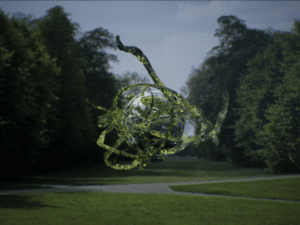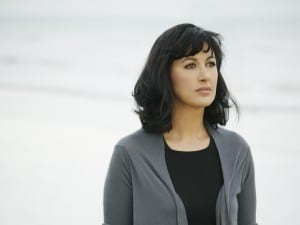Session 7 for the Future Now Symposium entitled Curating for the Future: A Collaborative Approach looks at how galleries are devising new strategies for developing audiences, particularly in an age where technology signifies a new set of business models. Remco de Blaaij, Senior Curator at the Centre for Contemporary Arts (CCA), Glasgow is one of the speakers on the panel. We talk with him about the age of technology, new campaigns for publicly-funded galleries and what to expect from the session.
A: This session looked at how galleries are devising new strategies for developing audiences, particularly in an age where technology signifies a new set of business models. How is the Centre for Contemporary Arts, Glasgow devising such strategies?
RdB: The CCA has been operating on an open source model, which gives many of the spaces away for free, or almost free for cultural practitioners to use. We hold a core part to programme ourselves, such as our exhibitions and our cafe, bookshop and design shop are run independently from ourselves. Of course technology in itself forces new ways of thinking, but we tend to look at the its future potentials partly by understanding its human history, we are trying to understand better constantly where we have come from and why we are in the time of now, and our building, in a way that we are. It informs our daily operation, but also how we conceptually think about programming.
A: Your establishment is part of the Paying Artists campaign, which aims to secure payment for artists who exhibit in publicly-funded galleries. How has this campaign helped the artists working with CCA so far?
RdB: I am not sure, as we were already paying artist a fee since a long time, there was a strong commitment to this already It is strange, since we thought we were already behind in that discussion, which is a very active one in the UK and the rest of Europe at the moment. It appeared we were not and we were approached by the campaign. I think the campaign is a good thing, it’s a basic consideration everywhere and it is slightly strange that we still need to discuss these matters in 2016. Among artist there is a growing awareness but obviously also strong action happening, as they are the ones who are directly involved in this. The campaign however makes institutes more aware of the situation they are in, a position which they might have not considered before without the campaign.
A: The CCA building is steeped in history and the organisation aims to play a key role in the cultural life of the city for decades. In your opinion, how has CCA accomplished this in its lifetime?
RdB: It’s not something that has been carefully planned or constructed. Our history is very much part of a chain of failures and the solving of those in creative ways, perhaps trying to solve failures, economically or not, maybe colours our history most. The other thing is that the building/organisation was mostly run by artists or people that were close to these practices, could relate to it, but were often themselves artist, musician and filmmakers. The urgency for a cultural life of a particular kind was never really organised from a top, but signaled by the people themselves. Perhaps it started insular, but also there was a growing realisation that ‘our’ urgency could also be those of others, which sparked a curiosity in what other people’s wishes, fears and possibilities were. It was in that sense not responding to cultural life, it was trying to actively shape and understand it.
A: CCA Glasgow is hosting an immersive audio-visual experience combining sculpture, video projection and live music devised by artist Anna Lucia Nissen from 2-4 June this year, alongside many other exciting exhibitions. What can audiences expect to see throughout the centre?
RdB: We currently run over a thousand events, which are sometimes micro-exhibitions, screenings or full blown installations over a couple of weeks. In our own programme we look at the city and environment we live in and how that might relate to places where other people live. It might sound obvious, but we still have not figured out this basic question and much lies ahead to think how artistic practice comes into that discussion. It makes us wanting to have a balance between supporting local artist and showing international voices from elsewhere. We are interested in the politics, the relationship between humans, within that context and how that shapes our reality. In our programme by many of our partners we see film festivals that are interested in gender or human rights issues and we see complex technological sound installations directly linking to new technological advances. We are currently thinking a lot about the term ‘public engagement’ and what that curatorially means not only theoretically, but also by practicing it and learn through that.
A: The year-round programme at CCA includes cutting-edge exhibitions, film, music, literature, spoken word, festivals, Gaelic and much more. Are there any artists or exhibitions both emerging or established, who we should be looking out for in the coming months?
RdB: There will be a solo show by Kathryn Elkin this summer and one by London based artist Pio Abad, which will likely be very good shows. We are also developing more research based exhibitions on textiles for 2018 and one around the realities of cities within the Americas and its understanding of modern life, for which we will commission five new works by mainly Central/South Amercian artists. There is Glasgow based artist Rob Churm whom we are working with for a solo show in 2017 and New York filmmaker Joey Huertas is producing a new film for 2018/2019, shown with his extensive catalogue of never in the UK seen film. On top of that we are also working on an exhibition around socially engaged artistic practices for next year. Many things happen at the same time.
One-Day and Two-Day Passes are available. Passes permit access to up to four sessions a day. Book your Pass and sessions here: www.aestheticamagazine.com/symposium
Travel to Future Now: The Aesthetica Art Prize Symposium in York with Virgin Trains.
Credits:
1. Marcus Lyon, Rambert III – Four Elements (2015). Courtesy of the artist.





